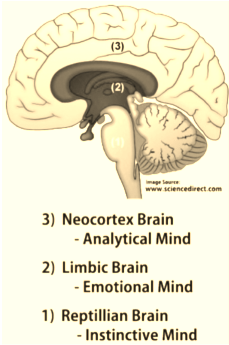|
Message: INJUSTICE.
Anger is the emotional alarm, triggered in our nervous system, which is activated when we (rightly or wrongly) perceive something is unjust, or that some violation of our rights has occurred. Like other emotions, anger is experienced in our bodies as well as in our minds. There is a complex series of physiological (body) events that occurs as we become angry. In our body we feel this physical activation in the form of tension in our chest and throat and this feeling can radiate to our shoulders, our back and into our neck and jaw, and cause headaches. It can affect our breathing and cause a feeling of agitation. All emotions are a call to action. Evolutionary speaking, anger is an emotion designed to change the behaviour of someone else. |
|
Anger is the emotion that calls to action “attack”, and is experienced as an up-rush in energy, designed to facilitate a favourable outcome (behaviour change in the other – you get your belonging back, or there is atonement for wrongdoing). The outcome of this emotional charge leads to mood change. When the outcome of anger is positive (i.e.; justice is served, wrongs righted) there is an elevation in mood. However if the circumstances are unpropitious, and the anger is inhibited or expressed anger leads to an unfavourable outcome, there is a depression of mood resulting in feeling bad, unworthy and helpless. There is truth in the old adage that psychoanalysts have stated for many years, “depression is anger turned inward” (anger not acknowledged or expressed).
|
~ Emotions ~
The primary emotions are anger, fear, pleasure, sadness, and disgust. Emotions can be conceptualized in terms of their functional or adaptive (help us survive) significance. Negative emotions such as anger and fear may promote avoidance or defensive behavior whereas the positive emotion of pleasure may facilitate ingestive, exploratory, sexual, or novel-seeking behavior. Thus, emotions and feelings may serve to achieve homeostasis or to facilitate adaptive behavior and equilibrium.
The primary emotions are anger, fear, pleasure, sadness, and disgust. Emotions can be conceptualized in terms of their functional or adaptive (help us survive) significance. Negative emotions such as anger and fear may promote avoidance or defensive behavior whereas the positive emotion of pleasure may facilitate ingestive, exploratory, sexual, or novel-seeking behavior. Thus, emotions and feelings may serve to achieve homeostasis or to facilitate adaptive behavior and equilibrium.


